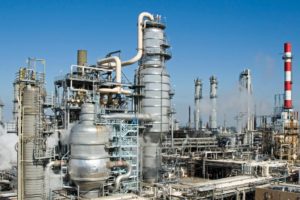 Industrialisation is an important component of economic growth. Industrial Policy refers to the strategies adopted by government for industrial development in the country. The government of India has amended first industrial policy of India in 1948. The new industrial policy was brought to address the changing environment. The objective of present industrial policy is to globalize the Indian economy and provide freer play of market forces in domestic economy.
Industrialisation is an important component of economic growth. Industrial Policy refers to the strategies adopted by government for industrial development in the country. The government of India has amended first industrial policy of India in 1948. The new industrial policy was brought to address the changing environment. The objective of present industrial policy is to globalize the Indian economy and provide freer play of market forces in domestic economy.
Industry Policy Resolution, 1948
Industrial Policy Resolution, 1948 (IPR, 1948) was first policy of independent India. Its main focus was that the state must play an active role in the development of industries with government stressing on the socialistic pattern of society. This policy remains in force for 8 years.
Objectives of IPR, 1948
- To establish social order where justice and equality of opportunity should be assured to all
- Promote rapid rise in standard of living of people through exploitation of available resource of the country
- Accelerate production to meet the needs of growing population
- Provide more and more opportunities of employment
The Industries (Development and Regulation) Act, 1951
IDR Act, 1951 was passed by parliament in Oct, 1991 to control and regulate industrial development in the country. Its objectives were:
- The regulation of industrial investment and production according to planned priorities and targets
- The protection of small entrepreneurs against the competition from larger industries
- Prevention of monopoly and concentration of ownership industries
- Balanced regional development with the view to reduce the disparity level of development of different regions of the country
Provisions of the Act
The act laid down two provisions:
- Restrictive provisions: Under this category, all the measures were designed to curb the unfair practices adopted by industries
- Registration and licensing of industrial undertakings
- Enquiry of listed industries
- Cancelation of registration license
- Reformative provisions:
- Direct regulation and control by government
- Control on price, distribution and supply
- Constructive measures
Industry Policy Resolution, 1956
IPR, 1956 replaced the IPR, 1948. It stressed on:
- Speeding up the pace of industrialization, particularly heavy industries
- Expansion of public sector and growth of co-operative sector
- State to take up the responsibility of setting up new industrial set up and development of transport facitlities
- Prevent private monopolies and concentration of economic process in hands of few number of individuals
Industrial Licensing Policy of 1970
The government introduced the new industrial licensing policy in 1970 on recommendation of Dutt Committee. Its main features were:
- The policy defines a sector called heavy investment sector. It consisted of industries involving investment of more than Rs 5 crore. All such industries were opened for private sector except those reserved for public sector in IPR, 1956.
- Industries involving investment between Rs 1 crore and 5 crore were included in middle sector. Licensing policy was considerably liberalised and simplified for these industries
- The setting up of Industries involving investment of less than Rs 1 crore does not require any license.
New Industrial Policy of India, 1991
The new Industrial Policy was announced in July, 1991 in the midst of severe economic instability in the country. The objective of the policy was to raise efficiency and accelerate economic growth.
Features of New Industrial Policy
- Strengthening of Private Sector
- Abolition of licensing system for large number of industries
- Greater role of private sector envisaged
- Contraction in field of operations for public sector
- Dismantling of controls
- Dispersing Industries
- Policy to shift industries away from big congested cities to rural and backward areas
- Incentives were brought to attract industries to village and backward regions
- Favoured agro-based industries near the farming areas
- Limiting role of public sector
- Policy pointed out the grey area which were not fit for PSUs and needs to be vacated by them
- Liberalization of foreign investments
- Foreign investment in the form of FDI allowed up to 50% with automatic approval
- Foreign investment in export promotion activities
- Foreign technology had been made easy by allowing automatic approvals for technology related agreements
- Promotion of Small Scale Industries (SSI)
- It ensured adequate supply of credit these industries based on their needs
- To enable modernization and technical up gradation, the policy allows equity participation by other non-SSI undertakings in SSI sector
- Limited partnership was allowed to enhance the supply of risk capital to the SSI sector
- It ensured the speedy payment towards the sale of products by SSI sector
- Domestic Regulatory Reforms
- Reduced the number of reserve industries
- Security and Industries of strategic concern were reserved for public sector
- Abolition of Industrial Licensing: It abolished industrial licensing system for all industries except few such as security and strategic concerns, social concerns, related to safety and manufacture of hazardous industries
We hope you liked this article on Industrial Policy of India. Here are few useful articles for you to read next:
Download this article as PDF
Click to go to RBI Grade B Preparation Page
Tags: industrial policy of india, industrial policy, industrial policy 1991, new industrial policy 1991, new industrial policy of india, latest industrial policy of india, new industrial policy, impact of new industrial policy 1991 on indian economy, industrial policy 1956, latest industrial policy, new economic policy 1991 and its impact, industrial policy of india 1991, industrial policy of india since independence, list of industrial policies in india, industrial licensing policy 1991, industrial policy 1948, industrial policy 1948 to 1991